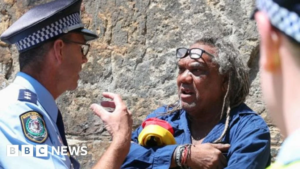By Ali Ingersoll, WRAL Investigative Data Journalist
RALEIGH, N.C. — Editor’s Note: WRAL News initially reported the number of drownings in 2020 incorrectly. The correct number – 126 drowning deaths in North Carolina in 2020 – is now reflected in the story below. This correction does not change the percentage of drownings that claim Black lives.
The sun sits low in the sky, yet water droplets are already splashed across the concrete walkway surrounding Lakemont pool.
The Swim Tribe team practices a variety of strokes at different distances. The team is the Triangle’s first organized group that is primarily comprised of children of color.
“Coming up, I didn’t get to see a minority owners,” said Gerard Woody, a former NC State swimmer who is the founder and coach at Swim Tribe.
He started the organization with the mission to “reach one, teach one,” meaning he is using his skills to teach other people of color how to swim.
Zion Hall is one of those swimmers. The 17-year-old has been swimming for about nine years now, she says. She picked up the sport first as a skill because she was the only one of her friends who didn’t know how to swim so she felt excluded from summer fun.
“My friends would swim out but I couldn’t,” said Hall. “I felt left out so I wanted to fit in and enjoy the sport.”
Now, she swims competitively. She’s the eldest on the team. She feels her role is similar to Woody’s — helping out others.
On average across the country, there are 11 drowning deaths a day, the CDC reports. Data shows people of color are at a higher risk than others. Woody says drowning disparities are linked to economic and financial factors like segregation and historically Black neighborhoods not having pools along with the fees associated with learning how to swim. He says all of that has led to access issues for those in communities of color, resulting in too many people not being able to swim.
Both swimmers says it’s heartbreaking to hear about drownings especially when they occur in the Black community, which they often do.
In 2020, there were 126 drowning deaths in North Carolina, according to the state’s vital records. Almost one out of every three people who drowned were Black, despite only 22% of the state’s population being Black.
“Water in general is a beautiful thing but if you don’t know anything about it, it is very dangerous,” said Woody. “You’d rather spend money on swim lessons than a casket.”
The swim coach says the sport has been slow to diversify but there has been some recent progress. For him, this team is about more than just winning – it’s about closing that gap, providing equal access to the sport… and teaching skills to help people from communities of color learn how to swim.. How to survive.
“It might not be me but the generation after or the next one, they might take it to the next level and it’ll just be normal [to see people of color competing].”




